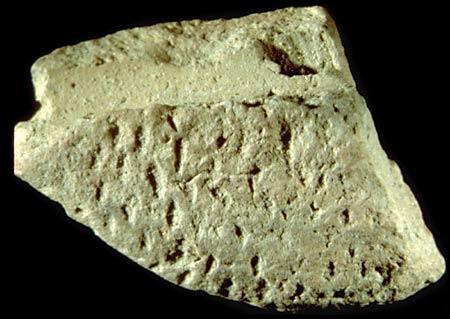December 7th, 2015
"Farmers in the Indus valley were the first to spin and weave cotton. In 1929 archaeologists recovered fragments of cotton textiles at Mohenjo-Daro, in what is now Pakistan, dating to between 3250 and 2750 BCE. Cottonseeds founds at nearby Mehrgarh have been dated to 5000 BCE. Literary references further point to the ancient nature of the subcontinent's cotton industry. The Vedic scriptures, composed between 1500 and 1200 BCE allude to cotton spinning and weaving . . .."
So goes the remarkable new book, Empire of Cotton A Global History (2015) by Sven Beckert, which traces the development of the cotton industry in depth. Shown above are the fragments of cotton fibers so identified by Marshall, Mohenjo-daro and the Indus Civilization, p. 585), and examples of weaves whose imprints have been found since at Harappa. Empire of Cotton goes on to show how the cotton industry, which India dominated in the early 18th century, was taken over by the British, how it spurred the slave trade with the Americas and the industrial revolution, its role a century in the independence movement and Gandhi's spinning wheel, and how it once again returned to Asia in a big way at the end of the 20th century. Though very little in the book has directly to do with the Indus civilization, it is a great example of how a single material and its exploitation can have such great impact on history; it is highly likely that the development of textile crafts were a key component of the Indus civilization's rise as well.
Captions
1. Marshall writes (Mohenjo-daro, p. 585): "This fragment of cloth was submitted to Mr. James Turner, Director of the Technological Research Laboratory, Bombay, for examination, who remarks in his preliminary report that 'The fibre was exceedingly tender and broke under very small stresses. However, some preparations were obtained revealing the convoluted structure characteristic of cotton. All the fibres examined were completely penetrated by fungal hyphae. The appearance of once of the convoluted fibres is shown in the accompanying photograph."
2. Fragment with fabric impression, Harappa. A terracotta fragment with fabric impression from Trench 54 provides clues on the types of weaving carried out by the ancient Harappans.
3. The earliest evidence of textiles at Harappa goes back to about 3300 BCE, and is another suggestion of how important this product must have been to the later Indus economy.
4. Textile impressions on a toy bed made during the Harappan Phase (c. 2600-1900 BCE) show finely woven cloth made of uniformly spun threads. This example shows a fairly tightly woven normal weave.








